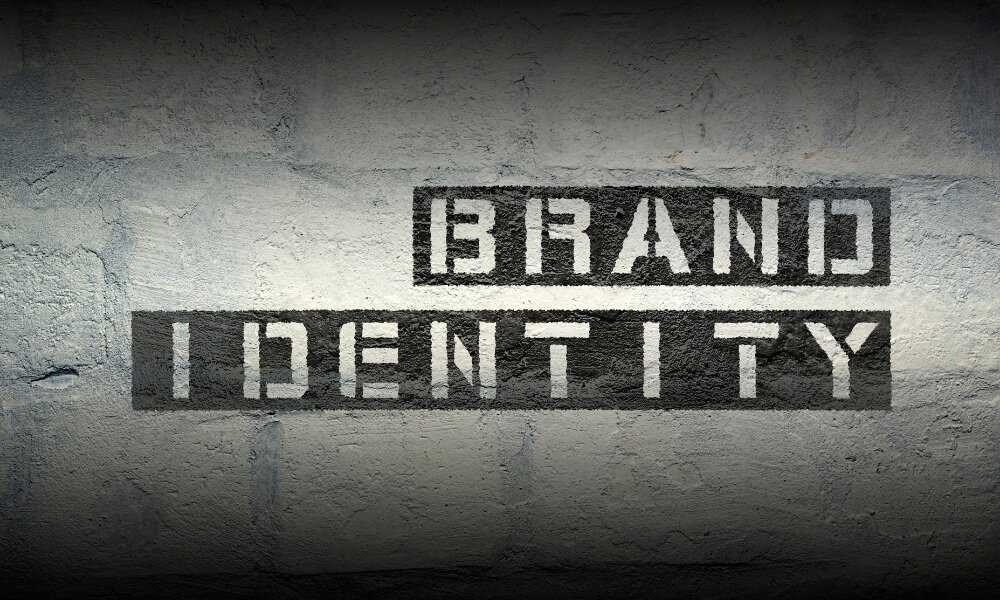Table of Contents
ToggleIn today’s highly competitive business world, a catchy and memorable brand name can make all the difference between success and failure. Your brand name is often the first point of contact between your business and your customers. It’s the foundation of your brand identity and can have a significant impact on your business’s overall success.
Creating the perfect brand name requires careful consideration and planning. It’s not just about coming up with a name that sounds good or is easy to remember. It’s about crafting a name that reflects your brand’s personality, values, and mission and resonates with your target audience.
In this guide, we will take you through creating a memorable brand name step-by-step. We will cover everything from brainstorming and research to testing and refining your ideas. By the end of this guide, you will have a solid understanding of what it takes to create a successful brand name that sets your business apart from the competition. So, let’s begin your journey to creating a memorable brand name that helps you succeed.
Creating a Strong Brand Identity:
Aligning Your Name with Your Brand Positioning

When it comes to building a successful brand, a great name is just the first step. The name you choose must align with your brand positioning, which is the unique value proposition your brand offers to consumers. It’s important to consider metaphors, visual imagery, and emotions when brainstorming names that reflect your brand positioning.
Metaphors are a great way to make brand names that communicate complex ideas and feelings in a way that is easy to remember. For example, the brand “Apple” uses a metaphor to convey innovation, creativity, and simplicity, which are all key elements of its brand positioning. Another example is the brand “Netflix,” which uses a metaphor to convey the idea of a movie theatre experience at home.
Visual imagery is another powerful tool for creating brand names that evoke a certain feeling or emotion. For example, the brand “Nike” uses the image of the goddess of victory to convey a sense of strength, victory, and achievement. Another example is the brand “Amazon,” which uses the image of a river to convey a sense of abundance, diversity, and movement.
Emotions are also an important consideration when brainstorming brand names. A brand name that evokes a specific emotion can create a strong connection with consumers. For example, the brand “Coca-Cola” uses the emotions of happiness, refreshment, and joy to create a strong emotional connection with their customers.
When brainstorming brand names, it’s important to consider how they align with your brand positioning. For example, a brand that sells high-end, high-quality products might choose a name like “Tiffany & Co.” that sounds elegant and classy. On the other hand, a brand that offers affordable, everyday products may want to choose a name that conveys simplicity and accessibility, such as “Target.”
If you like to design your logo you can start reading this article about Canva
Brainstorming Your Way to a Great Brand Name
When creating a brand name, brainstorming is an essential first step. Brainstorming allows you to explore a wide range of ideas and can help you generate a unique, memorable, and relevant name for your brand.
Here are some creative methods to generate brand name ideas:
- Crowdsourcing: Crowdsourcing can be a great way to generate brand name ideas. You can ask your followers on social media to suggest names, hold a contest to name your brand, or even hire a professional naming agency to help you generate ideas.
- Mind Mapping: Mind mapping is a visual brainstorming technique that allows you to explore different ideas and connections. Start by writing your brand name in the center of a piece of paper and then branch out with related words, phrases, and ideas.
- Word Association: Word association is a technique where you write down a list of related words and then use them to brainstorm brand name ideas. For example, if you’re creating a brand for a coffee shop, you might write down words like “aroma,” “caffeine,” “mug,” “roast,” “brew,” and “java.”
- Mashups: Mashups involve combining two or more words to create a new name. For example, the brand “Microsoft” is a mashup of “microcomputer” and “software.” Other examples include “Netflix” (Internet and flicks) and “Groupon” (group and coupon).
- Random Word Generator: There are many online tools that can be a great starting point for brainstorming brand name ideas. For example, Squadhelp premium domains can generate a list of unique and memorable names.
Naming Strategies of Top Brands: A Look at the Power of Great Brand Names
A great brand name can be a powerful asset for any business, helping to build brand recognition, drive customer loyalty, and set your business apart from the competition.

Here are ten top brands with an analysis of their names and how they have contributed to their success:
- Apple: Apple’s name is a metaphor that evokes innovation, creativity, and simplicity. The name also reflects the company’s original focus on producing personal computers that were easy to use and intuitive.
- Nike: Nike’s name comes from the Greek goddess of victory, which conveys a sense of strength, victory, and achievement. The name also reflects the company’s focus on producing high-quality athletic footwear and apparel.
- Coca-Cola: Coca-Cola’s name combines two key ingredients of the original recipe, coca leaves, and kola nuts. The name has become synonymous with happiness, refreshment, and joy, making it one of the most recognizable brands in the world.
- Amazon: Amazon’s name is a metaphor that evokes abundance, diversity, and movement. The name also reflects the company’s original focus on selling books online, which allowed customers to access a wider variety of books than ever before.
- Google: Google’s name is a misspelling of the word “googol,” which is a mathematical term for the number 1 followed by 100 zeros. The name reflects the company’s focus on organizing vast amounts of online information and making it accessible to everyone.
- Tesla: Tesla’s name is a tribute to the inventor Nikola Tesla, who is known for his work in electrical engineering. The name reflects the company’s focus on producing innovative, sustainable electric vehicles.
- Airbnb: Airbnb’s name combines the words “air mattress” and “bed and breakfast.” Which reflects the company’s original focus on providing an alternative to traditional hotel accommodations.
- Spotify: Spotify’s name is a mashup of the words “spot” and “identify.” Which reflects the company’s focus on helping users discover new music and artists.
- Uber: Uber’s name is a German word for “above” or “over.” Which reflects the company’s original focus on providing premium transportation services. The name also conveys a sense of speed and convenience.
- Zara: Zara’s name is a variation of the name “Zadar.” Which is the name of the Croatian city where the company’s founder Amancio Ortega, was on vacation when he came up with the idea for the brand. The name also reflects the company’s focus on providing high-quality, fast fashion at affordable prices.
When choosing a brand name
It’s essential to validate it with trademark research to ensure that it’s available for use. Many companies have received cease-and-desist letters after using names that were already trademarked by other companies. For example, in 2018, the startup company The Boring Company, founded by Elon Musk, received a cease and desist letter from DC Comics over using the name “bat” in their merchandise. Buying premium domain names is the safest way to avoid lawsuits in choosing brand names.
How to Ensure Your Name Resonates with Your Target Audience

You want a name that is memorable, easy to pronounce, and aligns with your brand’s values and positioning. But how do you know if your name will resonate with your target audience? That’s where audience testing comes in.
Audience testing involves gathering feedback from your target audience to determine which names draw their attention, inspire actions, and best align with your brand ideas.
Here are a few tips to keep in mind when conducting audience testing for your brand name:
- Be careful what questions you ask: Your questions should be designed to elicit honest feedback from your target audience. Avoid leading questions or questions that are too specific. Instead, ask open-ended questions that allow participants to express their thoughts and feelings about each name.
- Use a diverse sample: To ensure that your name resonates with a wide range of people, you should use a diverse sample of participants. Consider factors like age, gender, ethnicity, and geographic location when recruiting participants.
- Test multiple names: To better understand which names resonate with your target audience, you should test multiple names. This will allow you to compare and contrast different options and make an informed decision.
- Analyze the results: Once you have gathered feedback from your target audience, you should analyze the results to determine which names perform the best. Look for patterns in the data and consider factors like brand positioning, emotional resonance, and overall appeal.
By conducting audience testing before making your final decision, you can ensure that your brand name resonates with your target audience and helps to build brand recognition and loyalty. For example, when Snapchat was first launched, it was known as “Picaboo.” However, after conducting audience testing, the company realized that the name didn’t resonate with its target audience, and they eventually changed the name to Snapchat, which has since become one of the most popular social media apps in the world.
Conclusion
In conclusion, making a brand name that people will remember is a key part of building a successful business. Your brand name is often the first thing that potential customers will see and remember, so it’s essential to take the time to develop a name that aligns with your brand positioning, resonates with your target audience, and evokes emotions that are consistent with your brand values.
To do this, you could use metaphors, images, feelings, the crowd, and other creative ways to come up with names. Additionally, validating your names with trademark research and testing them with your target audience before making a final decision is important.
Remember, a strong brand name can help to differentiate your business from competitors. Build brand recognition and loyalty, and ultimately lead to greater success. So, take the time to carefully consider and develop your brand name. And you’ll be well on your way to naming your way to success.






